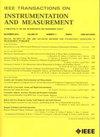Liquid Hydrogen Temperature Cryostage for Ice-Assisted Electron-Beam Lithography
IF 5.6
2区 工程技术
Q1 ENGINEERING, ELECTRICAL & ELECTRONIC
IEEE Transactions on Instrumentation and Measurement
Pub Date : 2024-10-30
DOI:10.1109/TIM.2024.3485441
引用次数: 0
Abstract
Liquid nitrogen (LN2) typically acts as a coolant in ice-assisted electron-beam lithography (iEBL) systems, so that the cryostage temperature cannot be lower than 77 K. To condense more gaseous precursors, such as carbon dioxide (CO2) in a high vacuum environment, a cooling system that does not rely on LN2 is necessary. In this article, we integrate a Gifford-McMahon (GM) cryocooler into the iEBL system, which can cool down samples from room temperature to 21 K in 2.25 h. The cold head and sample holder reach minimum temperatures of用于冰辅助电子束光刻技术的液氢温度低温恒温器
液氮(LN2)通常用作冰辅助电子束光刻(iEBL)系统的冷却剂,因此低温恒温器的温度不能低于 77 K。要在高真空环境中冷凝二氧化碳(CO2)等更多气态前驱体,就需要一种不依赖液氮的冷却系统。冷头和样品架的最低温度分别为 5.37~pm ~0.012$ K 和 19.14~pm ~0.009$ K,位于液氢的温度区域内。此外,为了将振动对扫描电子显微镜(SEM)的影响降至最低,还采用了气隙隔离系统和离散旋转阀,将振动限制在 30 nm 左右。最后,还研究了作为前驱体的二氧化碳,发现它是 iEBL 中的第二种正电阻,临界剂量比水冰小一个数量级。使用这种抗蚀剂还成功地制造出了金纳米结构。我们的系统实现了 iEBL 系统迄今为止的最低温度,大大扩展了可用于 iEBL 的前驱体范围。
本文章由计算机程序翻译,如有差异,请以英文原文为准。
求助全文
约1分钟内获得全文
求助全文
来源期刊

IEEE Transactions on Instrumentation and Measurement
工程技术-工程:电子与电气
CiteScore
9.00
自引率
23.20%
发文量
1294
审稿时长
3.9 months
期刊介绍:
Papers are sought that address innovative solutions to the development and use of electrical and electronic instruments and equipment to measure, monitor and/or record physical phenomena for the purpose of advancing measurement science, methods, functionality and applications. The scope of these papers may encompass: (1) theory, methodology, and practice of measurement; (2) design, development and evaluation of instrumentation and measurement systems and components used in generating, acquiring, conditioning and processing signals; (3) analysis, representation, display, and preservation of the information obtained from a set of measurements; and (4) scientific and technical support to establishment and maintenance of technical standards in the field of Instrumentation and Measurement.
 求助内容:
求助内容: 应助结果提醒方式:
应助结果提醒方式:


